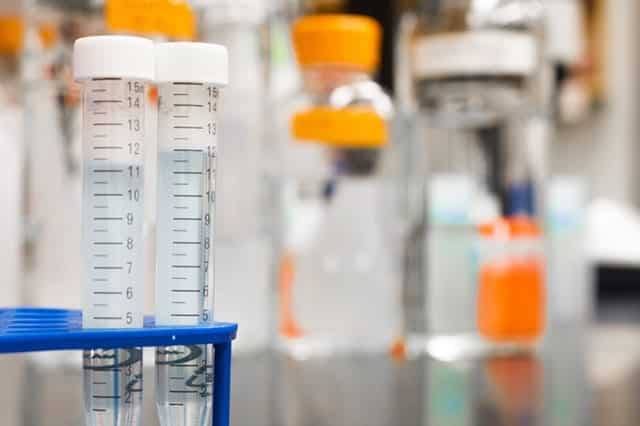The Pervasive Misunderstanding of the Low FODMAP Diet
I wrote this editorial response to the May 21, 2019 Today’s Practitioner article, Improved Anxiety Symptoms Over Just Probiotic. The article highlights a study that looked for evidence linking reduced anxiety symptoms with regulation of intestinal microbiota. The article stated, “(it is)…the benefits of non-probiotic food and supplements, such as a dietary FODMAP, that makes this study unique.”
As the FODMAP diet grows in popularity, we need to be clear about what the research has revealed. There is a pervasive misunderstanding of what the FODMAP diet does and does not do, and how it should be used in a clinical setting.
In study referenced in the article, Effects Of Regulating Intestinal Microbiota On Anxiety Symptoms: A Systematic Review, published in General Psychiatry, looked at twenty–one studies; fifteen of which were probiotic interventions and six were dietary interventions. Eleven studies in all showed a positive reduction of anxiety symptoms. Five of these studies were probiotic interventions and six were non-probiotic interventions. Of the five studies that were non-probiotic interventions, there were only two studies that look directly at a low FODMAP diet (LFD). [1]
One single-blind prospective study compared a 4–week LFD to the mNICE diet (a validated diet used in the treatment of IBS-D) in 84 subjects, and the results showed that the LFD intervention outperformed the mNICE diet, improving quality of life and anxiety scores. [2]
The second study compared a 4 week low FODMAP diet against yoga, and although both groups showed improved anxiety scores, the yoga intervention showed the most improvements.[3]
Two of the non-probiotic intervention studies looked at the effects of galactooligosaccharide (GOS) supplementation vs. resistant dextrin as the control. The fifth was labeled ‘nutrition intervention’ but neither the study, nor the specific interventions were made available for review.
When only two of the studies looked at a LFD and in one of the studies yoga was even more successful at reducing anxiety, should the FODMAP diet be singled out?
It is also clear that the author of the review study cited in the article in question is correlating a reduction in anxiety symptoms solely to the catch-all mechanism “regulation of intestinal microbiota.”
To say that probiotics merely regulate the intestinal microbiota is to grossly misconstrue the role that probiotics play in human health. They interact through a significant number of mechanisms: they produce short-chain fatty acids (SCFA) [4,5], enhance epithelia barrier integrity [6], modulate the immune system [7], influence hormone levels [8], produce enzymes [9], modulate gene expression [10] and studies have shown that probiotics can stimulate the enteric nervous system and affect gut transit time [11], and reduce visceral pain [12). Furthermore, L. reuteri has been shown to interact with the gut-brain axis in rats through the modulation of afferent sensory nerves that influence gut motility [13].
Although the mechanisms by which probiotics work are often underestimated, the mechanisms by which the FODMAP diet works are often overestimated. Studies have, with some consistently, shown that a FODMAP diet can alter digestive symptoms in IBS patients [14-17], yet it has not consistently been shown to do much else.
The exaggerated confidence given to the FODMAP diet, that it has the ability to favorably alter the intestinal microbiota, starve out organisms, or alter the immune system by reducing histamines, for example, are unfounded in the literature. The diet is being misrepresented across publications, by practitioners and over social media, and in chat rooms.
When a study says “FODMAP DIET” what are they actually testing?
If you search the term ‘low FODMAP’ in Pubmed.gov, the results returned will include a wide variety of dietary intervention methods, all under the umbrella term ‘low FODMAP.’ As with most investigative feeding studies, the methods are far from uniform across the studies.
Some studies use a true dietary intervention, comparing a low FODMAP diet (LFD) and a high FODMAP diet (HFD). Some provide the food, but most are instructing the subjects on the diet (ranging from 10 minutes of instruction to 3 sessions with a dietitian). The diet is then self-followed and adherence is self-reported. Generally, a HFD is equivalent to 50 grams of FODMAP a day, and a LFD is equivalent to 1.2-9 grams of FODMAP a day (the majority of studies use a 7-9 gram per day range).
Some studies place participants on 14-16 grams of fructooligosaccharides (FOS) or galactooligosaccharides (GOS) for the HFD arm. Others compare a LFD diet to FOS alone. In some FODMAP studies, dextrin is used as the control, where a LFD + 16 grams per day of dextrin is compared to a LFD + 16 grams per day FOS. [18]
When we look closely at the studies on FODMAP, and their proposed effects on the microbiota and the immune system, the findings are inconsistent at best. What is agreed upon is that LFD helps to alter symptoms of bloating, diarrhea and quality of life, but even these studies have issues with quality, “All trials had high risk of bias (only one double‐blinded), intervention periods ranged from 2 days to 6 weeks with one including a 6 month follow‐up. …control diets were heterogeneous with limited established efficacy.” [19]
Some studies are also mislabeling the benefits of a LFD. In the article, “Is A Low FODMAP Diet Dangerous?,” the author states, “Shepherd et al. [20] at 14-month follow-up, found 77% of patients adherent to the (LFD) with 76% reporting significant improvement in abdominal symptoms” and yet, the Shepard et al. study referenced only altered fructose, which should not be misconstrued as a low FODMAP dietary intervention. [21]
What are we as practitioners trying to acheive by using an LFD?
You Want to Starve Out the Organisms?
Methane levels do not increase, nor decrease in response to a LFD nor HFD intervention, respectively, in ALL studies where this is measured. [22, 23, 29-31] There are three studies that show a change in hydrogen. Before I discuss these studies, let’s look at the Lactulose Breath Test (LBT) and how this test was validated for use.
The LBT is a diagnostic tool to detect levels of excess hydrogen and methane that is produced when the consumed test substrate, lactulose, passes by higher than normal levels of organisms in the small intestine (bacteria and archaea are able to digest and ferment this sugar, but we cannot). The excess gas produced exchanges across the intestinal tract, into the blood and then circulates and moves out through our lungs – where it is measured in breath samples.
This test is a validated laboratory test when, and only when, the subject has properly prepped for this test. This includes a 12 hour food prep, that occurs 24 hours prior to the test, of only fish, eggs, chicken, white rice and white bread (the latter two are allowed because they digest rapidly in the upper section of the small intestine). Then the subject fasts for 12 hours, and then waits two hours after getting out of bed in the morning (because morning breathing is more shallow) to take a baseline measure. The baseline measure is a control marker for the lab, to show that the test prep was done properly.
Then a standard dose of lactulose is consumed and depending on the lab, the subject is instructed to collect breath samples in 15 to 30 minute increments, for 90-180 minutes.
The proper 12 hour food prep reduces fermentation potential of the organisms that reside in the large intestine, whereby, we are able to get a clearer measure of gases in the small intestine as the lactulose substrate moves past the organisms.
If prepping incorrectly, this is simply a measure of the fermentation of food, fibers, and waste that is in the colon.
The LBT has also not been validated for use while the subject is eating during the period of time when collecting breath samples. This is no more validated than collecting a blood lipid panel while doing a non-fasting high fat diet. We all understand that the blood lipid panel will be affected by food that was recently ingested.
The LBT was validated to look at hydrogen and methane in the small intestine, which will occur within the first 90 minutes of the test. If a study collects breath samples while eating over a 10-14 hour period and then compares data points, what exactly are they measuring?
The first study – A Low FODMAP Diet Is Associated With Changes In The Microbiota And Reduction In Breath Hydrogen But Not Colonic Volume In Healthy Subjects: healthy subjects ate their habitual diet for 7 days, then provided a stool sample and swallowed transit markers. They were provided a 24 hour standard food package that was not LFD, and then completed a LBT the following morning. They followed a LFD for one week and then were randomized into two groups – the LFD control group was supplemented with maltodextrin. The HFD group was supplemented with oligofructose (prebiotic oligosaccharide, fructans). On the final day of the diet intervention they were provided a standard food pack that was LFD (not the correct LBT diet prep), followed by a LBT the following day. [32]
Concerns with this study:
- The subject pool is healthy subjects – not IBS, nor SIBO.
- Proper food prep and fasting were not performed for the LBT.
- This is not a LFD vs. HFD food intervention. This is an LFD + dextrin vs. LFD + fructans intervention on healthy individuals.
- The differences seen with hydrogen likely represent the differences in colonic fermentation of the standard food packages offered the day before the LBT.
The second study – Randomised Clinical Trial: Gut Microbiome Biomarkers are Associated with Clinical Response to a LFD in Children with Irritable Bowel Syndrome: 33 children with IBS were monitored for 7 days on their habitual diet, they then were randomized into a 48-hour LFD or typical American childhood diet (TACD), followed by a 5 day washout, then crossed over to the other diet intervention for 48 hours. LBT was administered on day two of each intervention diet. Samples were collected for ≥ 8 hours, up to 15 hours, while they ate. [23]
Concerns with this study:
- Proper food prep and fasting was not performed for the LBT.
- They ate during the LBT.
- LBT data was collected and analyzed over a 15 hour timespan.
This study did draw some interesting conclusions: “gas production did not correlate with pain, but may be a potential fermentation marker rather than a direct inducer of symptoms. Change in symptoms is more likely due to reduction in distention, reducing visceral hypersensitivity, than it is to sweeping uniform changes in the microbiota or immune system.”
The third study – one of the most cited studies within the SIBO world – Manipulation Of Dietary Short Chain Carbohydrates Alters The Pattern Of Gas Production And Genesis Of Symptoms In Irritable Bowel Syndrome: 15 healthy subjects and 15 IBS subjects were randomized into two groups. They ate either a LFD (9 grams per day) or HFD (50 grams per day) for two days, followed by a 7 day wash out period, and then crossed over to the other 2 day diet intervention.
Food was provided. From breakfast through lunch the LFD group was offered rice flakes, lactose free milk, tea, rice bread, margarine, orange juice, tea with lactose free milk, an orange, rice pasta with red sauce and lemonade with sugar. [15] Are we to use this menu, which is high in ‘white’ processed food and sugar, as a model to apply the LFD clinically?
Concerns with this study:
- Proper food prep and fasting were not performed for the LBT
- LBT data was collected and analyzed over a 14-hour timespan.
- They ate during the LBT – we cannot then deduce from this data that a LFD or a HFD increases or decreases hydrogen.
- They did not control for the timing of the meals that were consumed across the day. They provided the food and allowed subjects to choose when they would consume these foods across the day. Differences in hydrogen production could be due to timing with meals consumed, or, differences in transit time between the groups.
Though both groups had higher hydrogen levels in response to the HFD, the IBS group had higher levels than the healthy controls. There could be two reasons for this:
The first, this was due to what they were fed (stay with me here – I know that they were measuring diet). The HFD group was given soda with high fructose corn syrup. With IBS, it has been shown that fructose malabsorption alone leads to osmotic diarrhea as well as gas and bloating due to excess fermentation in the colon, [20, 24-27] and not from FODMAPs in general.
Second, the increase in hydrogen could have also been a result of the sorbitol, in the two pieces of chewing gum that they were allowed, in combination with fructose from the HFCS soda. This combination has been shown to exacerbate symptoms by swiftly delivering malabsorbed carbohydrates to the colon, as seen in the study, Fructose-sorbitol ingestion provokes gastrointestinal symptoms in patients with eating disorders. [28]
There was a fourth study that reported a small difference in hydrogen production in response to a LFD, Fodmaps Alter Symptoms and the Metabolome of Patients with IBS: A Randomised Controlled Trial Mcintosh et.al. There was no statistical significance found when comparing baseline data to post diet intervention data. The authors then threw out the baseline data and had to adjust the post diet intervention data to find a statistical significance within groups of patients with IBS. Yet, they didn’t properly food prep their subjects for the LBT and they collected and analyzed LBT data over a 5 hour period. [22]
You Want To Change The Microbiome?
Studies that have investigated microbiota key traits in IBS are able to identify distinct profiles in the intestinal microbiota and organic acids [33], yet the idea that a LFD will directly treat this, is yet to be seen. To date, the LFD has been shown to reduce symptoms, but it has not been shown to directly treat the underlying mechanisms that are at the root of IBS and SIBO.
Strict FODMAP reduction shows unfavorable changes to the microbiota, with little known impact to long term health. A LFD reduces Bifidobacterium [34-36], it reduces beneficial SCFA [37], which could impair the bowel barrier function by leading to the apoptosis of epithelial cells [38,39] and increase in proteolytic fermentation (fermentation of unfavorable BCFA versus SCFA). [40]
We can all agree that altering diet will alter the microbiome in some way. But the idea that we can use a LFD to cherry pick and reduce the specific species that are causing IBS or SIBO is unfounded. Additionally, another study found that the LFD made the microbiota more dysbiotic [18], in a group that has already been shown to have a dysbiotic microbiota. [41] “If dysbiosis is causal in IBS, although there is no direct evidence to support this, then the effect of a strict low-FODMAP diet might be counterproductive.” [42]
Fodmaps Alter Symptoms and the Metabolome of Patients with IBS: A Randomised Controlled Trial Mcintosh et.al.investigated LFD and the microbiome. There was no statistical significance found when comparing baseline data to post diet intervention data. The study states, “… No difference in alpha and beta diversity when comparing baseline samples and post treatment samples.” Yet, the study goes on to compare post intervention data only, making sweeping claims with regard to changes seen with the microbiome, in response to LFD vs. HFD diet. [22]
Two review articles summarized their investigation into IBS and the microbiota:
“… the investigation of the intestinal microbiota in IBS is difficult due to the heterogeneity of this condition, and the effects of an altered intestinal microbiota may not be consistent across all subtypes of IBS (D-IBS, C-IBS and M-IBS).” [43]
Based on the systematic review, “low FODMAPs appear to reduce gastrointestinal symptoms for a least a subset of patients with IBS. However, due to the heterogeneity of reviewed studies, the influence on patients’ gut microbiome composition and/or microbiota metabolites requires additional studies.” [44]
Do You Want to Alter the Immune System?
There is one study that has looked at HFD, lipopolysaccharides (LPS) and visceral hypersensitivity, mainly in rats, but also in 6 IBS-D patients. In 6 of the rats, it was found that fecal LPS was higher in the HFD vs. control diet (8.6 vs 5.1 EU/ mg).
The study claims that a HFD …”induces mucosal inflammation and impaired gut permeability,” yet, as we extrapolate this to humans, this is a stretch. Rat chow, made to mimic a HFD, with lactose, FOS and fructose added, may cause mucosal inflammation and impaired gut permeability in rats placed under one hour of constant stress per day (as they did in this study), but it will never correctly mimic a whole foods diet with altered FODMAP content. The authors do caution “It should be noted that rodent and human microbiota may differ significantly. Hence, caution should be exercised in extrapolating our data to explain human disease.” [45]
What is more of interest are the 6 IBS-D patients – it appears that the researchers preferentially chose their 6 subjects from a group of qualified participants, ‘Human fecal samples were collected from 6 patients showing significant reductions in abdominal symptoms before and following the 4-week LFM diet (LFD).’
Fecal samples were taken from the 6 human subjects, both pre and post-intervention and administered intracolonically into naïve rats. Pre- LFD intervention fecal samples increased visceral hypersensitivity in the rats. Post-diet intervention fecal sample did not increase visceral hypersensitivity.
From these results, should we infer that a person with IBS-D should be placed on a LFD long term? Isn’t it a more plausible conclusion from this 6 person hand selected group, that people with IBS-D and an elevated fecal LPS may benefit from following a 4 week elimination phase LFD and practitioners might consider a LFD as adjunct support, combining this with other clinical interventions that are known to help heal up leaky gut?
Additional studies have shown mixed results
In a mouse study, LFD did not exacerbate nor mitigate inflammation; noting that microbiota profile changes were largely driven by inflammation rather than diet and the LFD caused a shift toward proteolytic fermentation following inflammation. [46]
In a human study, they compared LFD + dextrin vs. LFD + FOS. The LFD showed improvements of symptoms, and a reduction in IL-6 and IL-8, but also a decrease in SCFA and an increase in colonic pH – TNF-alpha were unchanged. [18]
Another human study, Effect of diet and individual dietary guidance on gastrointestinal endocrine cells in patients with irritable bowel syndrome (Review), looked at changes in duodenal enteroendocrine cells in patients with irritable bowel syndrome following a LFD. This review of the original study, by the same author, showed that 3-4 consecutive months on a self-followed LFD, increased serotonin production and the density of somatostatin cells, and quality of life; diarrhea and pain reduced, but constipation did not improve. [47] 46 IBS subjects started this study and only 14 subjects completed it (30% retention rate). This study was characterized by a high dropout rate, which is consistent with previous studies involving IBS patients. [8, 47-50]
In addition to the LFD, the subjects were also instructed to remove corn, legumes, wheat and artificial sweeteners from their diet. They included lactose free dairy products, alcohol and peeled apples and pears (the latter two are high in polyols and traditionally pulled with a LFD).
Is the increase in somatostatin cell density a result of a LFD, and/ or removing gluten, legumes, corn, and artificial sweeteners from the diet? Or, a combination of these AND a shift to whole foods eating; as removing gluten, corn, legumes and artificial sweeteners from a diet would force a shift from packaged foods to whole foods. [47]
Another question to ask – would these results reversed when the LFD is expanded, or when corn and wheat are reintroduced?
Before we continue to perpetuate this wave of fanfare for the LFD, we must first accept that the studies to date have offered mixed results, with the vast majority proving unfavorable. At this time, the LFD has consistently been shown to alter symptoms in some people with IBS.
We need further investigation into the long term effects on the microbiome and immune system. We need studies to implement the LBT in a validated way, so they may correctly interpret the impact of the LFD. “Inconsistencies between studies may be related to differences in habitual diets or differences in sample collection and analysis methodologies. The impact of these changes on gut function and symptoms remains to be elucidated.” [58] The impact on the intestinal microbiota specifically, has to be further investigated, before anyone can ‘safely’ implement a LFD long term.
Does a LFD Reduce Histamine Levels?
Some of you have likely heard the widespread belief that an LFD reduces histamines. This stems from the study, FODMAPs Alter Symptoms And The Metabolome Of Patients With IBS: A Randomised Controlled Trial – McIntosh et.al. 37 subjects with IBS were randomized into two groups: LFD vs. HFD (no cross over). [22]
The study’s abstract states, “Histamine, a measure of immune activation, was reduced eightfold in the low FODMAP group (p<0.05).” Let’s take a look at the one study that investigated LFD vs. HFD and histamines.
They measured a LBT, PCR stool testing and 29 different urine metabolites. Of the 29 different urine metabolites, they claim to see differences in three metabolites – one is histamine.
A single point urine test was used to evaluate for histamines. As urinary histamine varies greatly at any one point in time, the standard way to test urinary histamine levels is a 24-hr urine collection. Since the correct test was not utilized to measure histamines, further evaluation of the data and claims is unnecessary, but let’s continue. The standard range of a 24 hour urine histamine measure is 0.006-0.131 mg/ 24 h. The LFD baseline group (prior to the dietary intervention) was 0.006±0.0117, which, if correctly measured, is already a very low urinary histamine level. So, if we are to believe their claims that an LFD reduced histamine levels eight-fold, then the urinary histamine level went from very low, to very, very low.
Within the study, they state, ‘Metabolic profiling of urine showed (histamine within) groups of patients with IBS differed significantly after the diet (p<0.05)” highlighting that this study did not find a statistical significance with their data.
There was no statistical difference when comparing baseline data to post intervention data. The researchers then set baseline data aside and compared the post intervention data only. There was no statistical difference when comparing post data intervention. They state, “In addition, when comparing the post-diet effects, the means of these metabolites were statistically different (p<0.05) between the two diet groups when adjusting for their baseline values.” They have an asterisk on the p-value; and who in research doesn’t love an asterisk on a statistic? The asterisk notation reads, “*Obtained from analysis of covariance and adjusted for the baseline metabolite level, gender, IBS subtype and age.”
The group size was adjusted five different times to reach smaller and smaller sub-groups to finally claim a statistical significance “within groups of patients” (five, because 37 subjects completed the study, yet, they only analyzed urine metabolites in 34 subjects; tossing out the data of 3 people, but we are not told why).
This is where the assumption that a LFD lowers histamines has propagated – and this is what is cited in the 40 research studies, repeated and recited by practitioners and across social media; Google search returns 104,000 results on ‘histamine + FODMAP’.
A new study that looked at histamine and FODMAP was presented at Digestive Disease Week this year and it may be published soon: “Host Microbe Interactions as Determinants to Response to Fermentable Diets,” which also looked at a single ‘fasting’ urine collection in the morning to assess histamines. They also defined a LFD as 2.6 g/ day +/- 1.4 and a HFD as 8.2 g/ day +/- 5.6, which is not in range with other LFD and HFD studies.
If you are a practitioner and you have been stating that a “LFD lowers histamines,” I urge you to correct this information within your handouts, and online posts.
If you are a researcher with a published study, who has cited FODMAPs Alter Symptoms And The Metabolome Of Patients With IBS: A Randomised Controlled Trial – McIntosh et.al., I urge you to issue a correction. You have a responsibility to the field to make this correction.
Changes in Nutrient Status while on a LFD
There are a few studies that investigated micro and macro-nutrient adequacy on a 4-week LFD and one long term prospective follow up study. Interestingly, what some of these studies found was that habitual diets of people with IBS did not meet many DRI levels; leading to poor baseline nutrient status and low baseline diet diversity. They showed that although a LFD reduces symptoms, the 4-week LFD didn’t correct these nutritional deficiencies.
Let’s look at three of these studies:
The Impact of a 4-Week Low-FODMAP and mNICE Diet on Nutrient Intake in a Sample of US Adults with Irritable Bowel Syndrome with Diarrhea, S. Eswaran et. al. investigated changes in nutrient status in response to a 4-week LFD vs. the mNICE diet. [68]
Although subjects followed a 4-week diet, the results of this study are based solely on the analysis of two 3-day food journals which were collected pre-intervention and during week four of the dietary intervention. The authors reported that “some participants complete diary at the end of the day, rather than in real-time diaries may have recall bias and difficulty in estimating quantities.”
The LFD group was encouraged to limit consumption of high-FODMAP foods, yet, the levels (grams) of FODMAPs was not reported in the final analysis, nor are we offered an average FODMAP intake (we are unsure if this study is comparable to other LFD studies, that use 7-9 grams of FODMAP/ day in the low FODMAP arm).
Baseline nutrient measures of both groups showed that their habitual diets failed to meet the DRI for vitamins C, D, and E; and calcium; magnesium; and potassium. The LFD group did not meet the DRI for vitamin K and folate. The authors also noted inadequate dietary vitamin D, which another study found, linking poor vitamin D status with IBS. [60]
In this pilot study, A Low Fermentable Oligo-Di-Mono-Saccharides and Polyols (FODMAP) Diet is a Balanced Therapy for Fibromyalgia with Nutritional and Symptomatic Benefits, A. Marum, et. al., 38 fibromyalgia subjects followed a 4 week LFD. They found no significant changes in calories, macronutrients, nor fiber, calcium, magnesium nor vitamin D. Subjects reported reduced fibromyalgia and IBS symptoms and reduced somatic pain, with 86% reported compliance with the diet. The LFD group consumed 2.6 grams FODMAP +/- 5.4 per day. Baseline measures of nutrient status of the subjects habitual diets was not highlighted by the authors.
This study, Nutrient Intake, Diet Quality, and Diet Diversity in Irritable Bowel Syndrome and the Impact of the Low FODMAP Diet, H. Staudacher, et. al., 130 subjects with IBS were randomized to a 4-week LFD, sham diet or to continue their habitual diet.
They found that the habitual diet quality and diversity was poor. When the LFD group was compared to the habitual diet group and sham diet group, no significant difference was found between calories or macronutrients. The LFD group, averaging 8.6g of FODMAP per day, showed an increase in vitamin B12 intake (dietary increase in eggs and fish) and that calcium and additional nutrient levels measured were found to be no different than the habitual diets.
This study is comparing a 4-week LFD to habitual diets that were already lacking in quality, diversity and micronutrient density for a few minerals – lower in iodine, magnesium, iron and selenium. The data also showed that by week 4, the LFD showed a further reduction in diet quality. Even though the LFD education was performed through one on one consultation with a Registered Dietitian, the authors noted, “This suggests that, even when counseling is provided by a specialist dietitian, the overall ability for individuals to meet the dietary guidelines when following a short-term low FODMAP diet is reduced.” [62]
There is one long term prospective questionnaire study assessing nutrient levels with LFD, Long-Term Impact of the Low-Fodmap Diet on Gastrointestinal Symptoms, Dietary Intake, Patient Acceptability, and Healthcare Utilization in Irritable Bowel Syndrome, M. O’Keefe, et. al., 103 IBS subjects tracked symptoms and dietary intake while following a low FODMAP elimination and reintroduction diet over 6–18 months. Initial FODMAP education was performed by trained dietitians. They found that 82% continued to follow an Adapted FODMAP Diet ((AFD) personalized adaptation of the diet to self-manage their symptoms in the long term), while 18% had returned to their habitual diet. [57]
At baseline, 20 patients had IBS-C, 39 patients had IBS-D, 21 patients had IBS-M, and 23 patients had IBS-U. To note, stool frequency was marked “normal” (once every 3 days to three times a day) or “abnormal” (less than once every 3 days or more than three times a day).
The AFD group had significant reductions in abdominal pain, bloating, flatulence, incomplete evacuation, and lethargy; with pain, bloating and flatulence decreasing by more than one-third in the long term. The authors noted, “Our study demonstrated benefits of the FODMAP elimination phase, which is only intended for short-term use, to symptoms and QOL in IBS-D patients.”
Total FODMAP intake was significantly lower for the AFD group (20.6±14.9 g/d) compared with the ‘habitual’ group (29.4±22.9 g/d, P=.039. The AFD group ate significantly less fructans and fructose, but there was no difference observed with lactose, galacto-oligosaccharides, sorbitol, or mannitol levels between the groups.
There were no significant differences between groups at long-term follow-up for energy and nutrient intakes, except for folate and vitamin A which were both higher in the AFD group compared with the ‘habitual’ group in comparison to the UK recommendations.
The AFD group reported that the diet was more expensive and that they had difficulty eating at restaurants, with family and while traveling, and they had a greater dependency on supplements. [57]
LFD in the Pediatric Population
There have been a few studies investigating the efficacy of an LFD in the pediatric population. [63-66] Although these studies have shown that an LFD reduces abdominal pain, bloating and diarrhea symptoms in children, can the statement be made that an LFD is safe and beneficial for children?
The study, Low FODMAP diet in children and adolescents with functional bowel disorder (FGD): A clinical case note review, S. Brown, et. al., reviewed 29 cases where a LFD was utilized over a three month period, subjects and families met with a dietitian three times and were instructed to follow an LFD elimination and then reintroduction phase. [67]
We need to recognize that this is a retrospective clinical case review, in which they contacted 29 children to fill out the questionnaires 2- 29 months later, “A 16‐point IBS satisfaction survey was utilized in the current study to measure symptoms (bloating, pain, alternating stools, etc.); however, this was completed retrospectively and, in some instances, more than 2 years after the child received his or her initial dietetic consult.”
Twenty‐three (79%) participants reported an improvement of symptoms, complete resolution of GI symptoms was observed in 92% of those with bloating, 87% of those with diarrhea, and 77% of those with abdominal pain. However, nine (31%) children were not satisfied with the improvement of their overall symptoms, and 17 (59%) were not interested in changing their diet further to improve symptoms.
During the reintroduction phase, several participants experienced symptoms to more than one carbohydrate as follows: fructans was the most common intolerance (18, 67%), followed by lactose (16, 56%), polyols (2, 7%), fructose (2, 7%), and GOSs (2, 7%). Six (24%) children specifically identified that apples (fructose and sorbitol) triggered symptoms.
17% of children in this study experienced stress and anxiety. Children with FGD are known to have higher risks of anxiety and stress. The younger subjects (10 year old subjects) had more success with this study (likely because the parents had more control over their diet). So, placing them on a restricted diet for three months (plus the time that this takes to reintroduce FODMAPs) may be too drastic of an approach.
Instead, why don’t we learn from studies like this and reverse the approach, by focusing on single FODMAPs that are more likely to trigger GI symptoms; trial single eliminations to fructans and lactose, then fructose and assess symptoms.
The authors state, “LFD is safe and beneficial for children.” This is a broad reaching claim that is unsubstantiated by the data presented in this study. A more concise statement would be, “In a group of 23 children with FGD, a short term low FODMAP elimination diet, followed by a reintroduction phase reduced bloating, diarrhea, and abdominal pain symptoms in 77%, 87% and 92% respectively, yet increased anxiety in 17%.”
What are the Drawbacks?
The FODMAP diet is an elimination-style three-phase plan to investigate which Fermentable Oligosaccharides, Monosaccharides, and Polyolys (FODMAP) are triggering symptoms. Phase 1: 4–week FODMAP elimination; Phase 2: reintroduction (challenge); and then Phase 3: maintenance.
There are many drawbacks to implementing a FODMAP elimination diet.
- If someone is a responder, and symptoms are greatly diminished, it can be difficult to get them to reintroduce and challenge FODMAPs and to expand their diet.
- Many assume that the FODMAP diet is a direct treatment for IBS and SIBO, and, that by following the diet they will be free of symptoms and be cured. In reality, this is only managing some symptoms. Symptom and quality of life improvements are helpful, and the root issue still needs to be investigated, targeted and treated.
- If, in response to symptoms, a person has already begun to restrict foods, a shift to the elimination phase of the FODMAP plan may not provide as much relief. This may lead to more restriction as the patient continues to work towards major symptom control.
- If a person is low weight, hypoglycemic, anxious, malnourished, exhibit tendencies towards disordered eating, and/ or they already have other dietary restrictions in place, further restriction of their diet may do more harm than good.
- Many people with SIBO feel that they MUST go on a carbohydrate restricted diet to directly treat SIBO, with the goal of ‘starving out the organisms.’ This has not been shown in the literature, nor does this play out in the clinical setting. Patients coming into my practice have been following a restrictive FODMAP diet from 4 months and up to 7 years and they still have SIBO.
- People are becoming ‘stuck’ on this diet, with fear that every symptom that they experience is a worsening of a SIBO ‘infection’ that is growing in their intestines. This fosters anxiety and food fear and this in turn will negatively affect the entire body. As previously explained, an altered carbohydrate diet can temporarily alter symptoms, but it cannot starve out the organisms. SIBO is not an infection; it is a secondary condition, an overgrowth, brought about by a variety of factors. The goal when treating SIBO is to identify and treat the root set of factors that set SIBO up in the first place.
- If a patient has methane dominant SIBO, the LFD is contraindicated. No study has shown that the LFD, nor HFD, change methane levels. Pulling fiber will likely exacerbate constipation, which is often linked with methane dominance. [15, 22, 29, 31, 53]
- We see across studies that there is a high attrition rate; up to 70% in some studies. [47] The diet is difficult to follow by many for any length of time.
- People with IBS and SIBO are already dealing with chronic symptoms that leave them feeling socially isolated. [54] A restricted diet will further add to their feeling of social isolation, by making eating at restaurants and sharing a meal with family members, near impossible. This also makes shopping and cooking for a family a huge barrier to healing.
- Unless a person is working directly with a health care provider, they are often not educated on the fact that the LFD is an elimination diet. They are staying on this well beyond the 4 week elimination phase, with limited data on the longer term efficacy and safety of the LFD with respect to nutritional adequacy, precipitation of disordered eating behaviors, effects on fecal microbiota and metabolomic markers, and subsequent translation to clinical effects. [55]
- Based on two reviews, the authors recommend a LFD for short-term use only in managing IBS symptoms, after which, high FODMAP foods should be reintroduced. As such, reintroduction of FODMAPs after a 6-wk LFD likewise be encouraged among IBD patients due to a lack of evidence regarding the long-term effects and consequences of the diet. [34,56]
How to Correctly Implement the LFD in Clinical Practice
Since we know that there are striking variances among the pathophysiology of IBS subtypes and SIBO, and we know that a variety of factors influence an individual’s perceived response, and differences in factors that affect fermentation can change on any given day, [58] then the dietary approach should always be evaluated on an individual basis.
A 4-6 week low FODMAP elimination diet, followed by a challenge and maintenance phase, may be best implemented as adjunct support for managing symptoms in IBS-D and SIBO patients with diarrhea, yet every patient with IBS and SIBO with diarrhea does not need to attempt this diet.
If IBS patients present with poor dietary status, we can start with the basics, by improving eating patterns, providing education on achieving a nutrient dense diet, and supporting digestion and absorption. Although assessing nutrient adequacy of a 4-week LFD is necessary, to assess the safety and offer insights for clinical use, i.e. prescribing a well absorbed multivitamin along with a 4-week LDF is a good idea, many people are not using this as a short term elimination diet.
Practitioners may want to consider first targeting individual FODMAP foods containing fructans, fructose, and then lactose, versus pulling all FODMAPs from the start. Consider reversing the full low FODAMAP elimination diet for those patients with whom a foundational approach of managing stress, cleaning up the diet and basic approaches to supporting digestion, motility, and bowel habits have failed to reduce symptoms to a manageable level. Consider pulling single FODMAPs, which have been shown to be more likely to cause symptoms in patients with IBS, fructans, lactose and, lesser so, fructose.
Since yoga and gut-directed hypnotherapy, as seen in The Efficacy of Gut‐Directed Hypnotherapy is Similar to that of the Low‐FODMAP Diet for the Treatment of IBS, have been as effective as the LFD at reducing symptoms in IBS patients, practitioners should incorporate these interventions. [3] [59]
When implementing the LFD in your practice, personalize the approach by providing adequate one-on-one counseling on the implementation of this diet and by speaking directly to the patient’s needs, their clinical presentation, and their lifestyle.
Be sure to emphasize that this is a 4-6 week short term elimination diet and the goal is to challenge and expand the diet, or further harm may be done to the gut microbiota.
In functional medicine, we pride ourselves at getting to the root of the issue. A LFD may provide adjunct support and symptom relief within a subset of your patients. Yet, since these only address symptoms, please consider that this is placing a high level of time and energy into a sweeping dietary change that is not a direct treatment for IBS and SIBO and in the end, it may do more harm than good.
Sources:
(1) Yang B, Wei J, Ju P, et al. Effects Of Regulating Intestinal Microbiota On Anxiety Symptoms: A Systematic Review. General Psychiatry 2019;32:e100056. doi:10.1136/gpsych-2019-100056(2) Eswaran, S, et al. A Diet Low in Fermentable Oligo-, Di-, and Monosaccharides and Polyols Improves Quality of Life and Reduces Activity Impairment in Patients With Irritable Bowel Syndrome and Diarrhea. Clinical Gastroenterology and Hepatology 2017;15(12):1890-1899.e3. doi: 10.1016/j.cgh.2017.06.044.
(3) Schumann D, et al. Randomised Clinical Trial: Yoga Vs A Low-FODMAP Diet In Patients With Irritable Bowel Syndrome. Aliment Pharmacol Ther 2018;47:203–11. doi:10.1111/apt.14400
(4) Gao, C, et al. Gut Microbe-Mediated Suppression of Inflammation-Associated Colon Carcinogenesis by Luminal Histamine Production. The American Journal of Pathology 2017;187(10):2323–2336. doi: 10.1016/j.ajpath.2017.06.011
(5) Sanders, ME, et al. Shared mechanisms among probiotic taxa: implications for general probiotic claims. Current Opinion in Biotechnology2018; 49:207–216. DOI: 10.1016/j.copbio.2017.09.007.
(6) Rao, RK & Samak, G. Protection and Restitution of Gut Barrier by Probiotics: Nutritional and Clinical Implications. Current Nutrition and Food Science 2013;9(2):99–107.
(7) Yan, F & Polk, DB. Probiotics and immune health. Current Opinion in Gastroenterology 2011;27(6):496–501. doi: 10.1097/MOG.0b013e32834baa4d .
(8) Clarke, G, et al. Minireview: Gut Microbiota: The Neglected Endocrine Organ. Molecular Endocrinology 2014;28(8):1221–1238. doi: 10.1210/me.2014-1108
(9) de Vrese, M, et al. Probiotics–compensation for lactase insufficiency. The American Journal of Clinical Nutrition2001;73(2 Suppl):421S–429S. doi: 10.1093/ajcn/73.2.421s
(10) Plaza-Diaz, J, et al. Modulation of immunity and inflammatory gene expression in the gut, in inflammatory diseases of the gut and in the liver by probiotics. World Journal of Gastroenterology2014;20(42):15632–49. doi: 10.3748/wjg.v20.i42.15632.
(11) Barbara, G, et al. Interactions between commensal bacteria and gut sensorimotor function in health and disease. Am J Gastroenterol 2005;Nov;100(11):2560-8. doi: 10.1111/j.1572-0241.2005.00230.x
(12) Pusceddu, MM & Gareau, MG. Visceral pain: gut microbiota, a new hope? J Biomed Sci 2018;25:73. doi: 10.1186/s12929-018-0476-7
(13) Kellow JE, et al. Principles of applied neurogastroenterology: physiology/motility-sensation. Gut 1999;45(Suppl 2):ii17–ii24. doi: 10.1136/gut.45.2008.ii17.
(14) Halmos EP, et al. A diet low in FODMAPs reduces symptoms of irritable bowel syndrome. Gastroenterology 2014;146:67–75.e5. doi: 10.1053/j.gastro.2013.09.046.
(15) Ong DK, et al. Manipulation of dietary short chain carbohydrates alters the pattern of gas production and genesis of symptoms in irritable bowel syndrome. J Gastroenterol Hepatol 2010;25:1366–73. doi 10.1111/j.1440-1746.2010.06370.x.
(16) Shepherd SJ, et al. Dietary triggers of abdominal symptoms in patients with irritable bowel syndrome: randomized placebo-controlled evidence. Clin Gastroenterol Hepatol 2008;6:765–71. doi: 10.1016/j.cgh.2008.02.058.
(17) Böhn L, et al. Diet Low in FODMAPs Reduces Symptoms of Irritable Bowel Syndrome as Well as Traditional Dietary Advice: A Randomized Controlled Trial. Gastroenterology 2015;149:1399–407.e2. doi: 10.1053/j.gastro.2015.07.054.
(18) Hustoft, TN, et al. Effects of varying dietary content of fermentable short-chain carbohydrates on symptoms, fecal microenvironment, and cytokine profiles in patients with irritable bowel syndrome. Neurogastroentero and Motil. 2017 Apr;29(4). doi: 10.1111/nmo.12969.
(19) Krogsgaard LR, et al. Systematic review: quality of trials on the symptomatic effects of the LFD for irritable bowel syndrome. Aliment Pharmacol Ther 2017;45:1506‐1513. doi: 10.1111/apt.14065.
(20) Shepherd SJ, et al. Fructose malabsorption and symptoms of irritable bowel syndrome: guidelines for effective dietary management. J Am Diet Assoc 2006;106:1631–1639. doi: 10.1016/j.jada.2006.07.010.
(21) Bellini, M et al. Is a low FODMAP diet dangerous? Tech Coloproctol 2018;Aug;22(8):569-571. doi: 10.1007/s10151-018-1835-9.
(22) McIntosh, K, et al. FODMAPs alter symptoms and the metabolome of patients with IBS: a randomised controlled trial. Gut 2016;66(7):1241–1251. doi:10.1136/gutjnl-2015-311339.
(23) Chumpitazi, BP, et al. Randomised clinical trial: gut microbiome biomarkers are associated with clinical response to a low FODMAP diet in children with the irritable bowel syndrome. Alimentary Pharmacology & Therapeutics 2015;42(4):418–427. doi:10.1111/apt.13286.
(24) DiNicolantonio JJ, et al. Is Fructose Malabsorption a Cause of Irritable Bowel Syndrome? Med Hypotheses 2015;Sep;85(3):295–297.doi: 10.1016/j.mehy.2015.05.019.
(25) Nelis GF, et al. Role of fructose-sorbitol malabsorption in the irritable bowel syndrome. Gastroenterology 1990;99:1016–1020. doi: 10.1016/0016-5085(90)90621-7
(26) Fernandez-Banares F, et al. Sugar malabsorption in functional bowel disease: clinical implications. Am J Gastroenterol 1993;88:2044–2050.
(27) Symons P, et al. Symptom provocation in irritable bowel syndrome. Effects of differing doses of fructose-sorbitol. Scand J Gastroenterol 1992;27:940–944.
(28) Friesen N, et al. Fructose-sorbitol ingestion provokes gastrointestinal symptoms in patients with eating disorders. World J Gastroenterol 2009;Nov 14;15(42):5295–5299. doi: 10.3748/wjg.15.5295.
(29)Tuck, CJ, et al. Increasing Symptoms in Irritable Bowel Symptoms With Ingestion of Galacto-Oligosaccharides Are Mitigated by α-Galactosidase Treatment. The American Journal of Gastroenterology 2017;113(1):124–134.doi:10.1038/ajg.2017.245.
(30) Chumpitazi, BP, et al. Gut microbiota influences low fermentable substrate diet efficacy in children with irritable bowel syndrome. Gut Microbes 2014;5(2):165–175. doi:10.4161/gmic.27923.
(31) De Roest, RH, et al. The low FODMAP diet improves gastrointestinal symptoms in patients with irritable bowel syndrome: a prospective study. International Journal of Clinical Practice 2013;67(9):895–903. doi:10.1111/ijcp.12128.
(32) Sloan, TJ, et al. A low FODMAP diet is associated with changes in the microbiota and reduction in breath hydrogen but not colonic volume in healthy subjects. PLOS ONE 2018;13(7):e0201410. doi:10.1371/journal.pone.0201410.
(33) Tana, C, et al. Altered profiles of intestinal microbiota and organic acids may be the origin of symptoms in irritable bowel syndrome. Neurogastroenterology & Motility 2009;May;22(5):512-9,e114-5. doi: 10.1111/j.1365-2982.2009.01427.x.
(34) Staudacher HM, et al. Fermentable Carbohydrate Restriction Reduces Luminal Bifidobacteria and Gastrointestinal Symptoms in Patients with Irritable Bowel Syndrome. Journal of Nutrition 2012;142(8):1510–8. doi: 10.3945/jn.112.159285.
(35) Halmos EP, et al. Diets that differ in their FODMAP content alter the colonic luminal microenvironment. Gut 2015;64(1):93–100. doi: 10.1136/gutjnl-2014-307264.
(36) Staudacher HM, et al. A Diet Low in FODMAPs Reduces Symptoms in Patients With Irritable Bowel Syndrome and A Probiotic Restores Bifidobacterium Species: A Randomized Controlled Trial. Gastroenterology 2017;153(4):936–47. doi:10.1053/j.gastro.2017.06.010.
(37) Hynonen U, et al. Isolation and whole genome sequencing of a Ruminococcus-like bacterium, associated with irritable bowel syndrome. Anaerobe 2016;39:60–7. doi: 10.1016/j.anaerobe.2016.03.001.
(38) Gibson P, et al. Personal view: Food for thought— Western lifestyle and susceptibility to Crohn’s disease. The FODMAP hypothesis. Aliment Pharmacol Ther 2005;21;1399– 1409. doi: 10.1111/j.1365-2036.2005.02506.x
(39) Durchschein F, et al. Diet therapy for inflammatory bowel diseases: The established and the new. World J Gastroenterol 2016;22:2179–2194. doi: 10.3748/wjg.v22.i7.2179.
(40) Valeur J, et al. Fecal Fermentation in Irritable Bowel Syndrome: Influence of Dietary Restriction of Fermentable Oligosaccharides, Disaccharides, Monosaccharides and Polyols. Digestion 2016;94(1):50-6. doi: 10.1159/000448280.
(41) Rajilic-Stojanovic M, et al. Intestinal microbiota and diet in IBS: causes, consequences, or epiphenomena? Am J Gastroenterol 2015;110(2):278–87. doi:10.1038/ajg.2014.427.
(42) Hill P, et al. Controversies and Recent Developments of the Low-FODMAP Diet. Gastroenterol Hepatol (N Y) 2017;Jan;13(1):36-45.
(43) Ian M Carroll, et al. Luminal and mucosal-associated intestinal microbiota in patients with diarrhea-predominant irritable bowel syndrome. Gut Pathog 2010;2:19. doi: 10.1186/1757-4749-2-19
(44) Su H, et al. Effects of Low-FODMAPS Diet on Irritable Bowel Syndrome Symptoms and Gut Microbiome. Gastroenterol Nurs 2019;Mar/Apr;42(2):150-158. doi: 10.1097/SGA.0000000000000428.
(45) Zhou SY, et al. FODMAP diet modulates visceral nociception by lipopolysaccharide-mediated intestinal inflammation and barrier dysfunction. J Clin Invest 2018;Jan 2;128(1):267–280. doi: 10.1172/JCI92390.
(46) Tuck CJ, et al. The impact of dietary fermentable carbohydrates on a postinflammatory model of irritable bowel syndrome. Neurogastroenterol Motil 2019;Jul 9:e13675. doi: 10.1111/nmo.13675.
(47) Mazzawi, T, et al. Effect of diet and individual dietary guidance on gastrointestinal endocrine cells in patients with irritable bowel syndrome (Review). International Journal of Molecular Medicine (2017);40(4):943–952.doi:10.3892/ijmm.2017.3096.
(48) Everhart JE, et al. Irritable bowel syndrome in office-based practice in the United States. Gastroenterology 1991;100:998–1005. doi: 10.1016/0016-5085(91)90275-P.
(49) Spiegel BMR. The burden of IBS: looking at metrics. Curr Gastroenterol Rep 2009;11:265–269. doi: 10.1007/s11894-009-0039-x.
(50) Peery AF, et al. The burden of gastrointestinal diseases. Gastroenterology 2012;Nov;143(5): 1179–1187.e3. doi: 10.1053/j.gastro.2012.08.002
(58) Wang XJ, et al. Review article: biological mechanisms for symptom causation by individual FODMAP subgroups – the case for a more personalised approach to dietary restriction. Alimentary Pharmacology & Therapeutics 2019. doi:10.1111/apt.15419.
(51) Sandler RS, et al. The burden of selected digestive diseases in the United States. Gastroenterology 2002;122:1500–1511. doi: 10.1053/gast.2002.32978.
(52) Li FX, et al. Irritable bowel syndrome and health-related quality of life: a population-based study in Calgary, Alberta. Can J Gastroenterol. 2003;17:259–263. doi: 10.1155/2003/706891.
(53) Chumpitazi B P, et al. Gut microbiota influences low fermentable substrate diet efficacy in children with irritable bowel syndrome. Gut Microbes 2014;5(2):165–175. doi:10.4161/gmic.27923.
(54) Sahoo S, et al. Cross-cultural and psychological issues in irritable bowel syndrome. Journal of Gastroenterology and Hepatology 2017;32(10):1679–1685. doi:10.1111/jgh.13773.
(55) Mitchell H, et al. Review article: implementation of a diet low in FODMAPs for patients with irritable bowel syndrome-directions for future research. Alimentary Pharmacology & Therapeutics 2018;49(2):124–139. doi:10.1111/apt.15079.
(56) Staudacher HM, et al. Altered gastrointestinal microbiota in irritable bowel syndrome and its modification by diet: probiotics, prebiotics and the low FODMAP diet. Proc Nutr Soc 2016;75:306–318. doi: 10.1017/S0029665116000021.
(57) O’Keeffe M, et al. Long-term impact of the low-FODMAP diet on gastrointestinal symptoms, dietary intake, patient acceptability, and healthcare utilization in irritable bowel syndrome. Neurogastroenterology & Motility 2017;30(1):e13154. doi:10.1111/nmo.13154.
(58) Wang XJ, et al. Review article: biological mechanisms for symptom causation by individual FODMAP subgroups – the case for a more personalised approach to dietary restriction. Alimentary Pharmacology & Therapeutics 2019. doi:10.1111/apt.15419.
(59) Peters S, et al. Randomised clinical trial: the efficacy of gut‐directed hypnotherapy is similar to that of the LFD for the treatment of irritable bowel syndrome. Aliment Pharmacol Ther 2016;44:447‐ 459. doi: 10.1111/apt.13706.
(60) Williams CE et. al. Vitamin D status in irritable bowel syndrome and the impact of supplementation on symptoms: what do we know and what do we need to know? Eur J Clin Nutr. 2018 Oct;72(10):1358-1363. doi: 10.1038/s41430-017-0064-z
(61) Marum A, et. al. A low fermentable oligo-di-mono-saccharides and polyols (FODMAP) diet is a balanced therapy for fibromyalgia with nutritional and symptomatic benefits. Nutr Hosp. 2017 Jun 5;34(3):667-674. doi: 10.20960/nh.703.
(62) Staudacher H, et. al. Nutrient Intake, Diet Quality, and Diet Diversity in Irritable Bowel Syndrome and the Impact of the Low FODMAP Diet. J Acad Nutr Diet. 2019 Apr 24. pii: S2212-2672(18)31829-X. doi: 10.1016/j.jand.2019.01.017
(63) Chumpitazi B, et. al. Gut microbiota influences low fermentable substrate diet efficacy in children with irritable bowel syndrome. Gut Microbes. 2014; 5: 165– 75.
(64) Chumpitazi B, et al. Randomised clinical trial: gut microbiome biomarkers are associated with clinical response to a low FODMAP diet in children with the irritable bowel syndrome. Aliment. Pharmacol. Ther. 2015; 42: 418– 27.
(65) Chumpitazi B, et al. Fructans exacerbate symptoms in a subset of children with irritable bowel syndrome. Clin. Gastroenterol. Hepatol. 2018; 16: 219– 25.
(66) Chumpitazi B, et al. Dietary carbohydrates and childhood functional abdominal pain. Ann. Nutr. Metab. 2016; 68(Suppl. 1): 8– 17.
(67) Brown S, et. al. Low FODMAP diet in children and adolescents with functional bowel disorder: A clinical case note review. JGH Open 2019. DOI: 10.1002/jgh3.12231.
(68) Eswaran S, et. al. The Impact of a 4-Week Low-FODMAP and mNICE Diet on Nutrient Intake in a Sample of US Adults with Irritable Bowel Syndrome with Diarrhea. J Acad Nutr Diet. 2019 May 15. pii: S2212-2672(18)31544-2. doi: 10.1016/j.jand.2019.03.003











